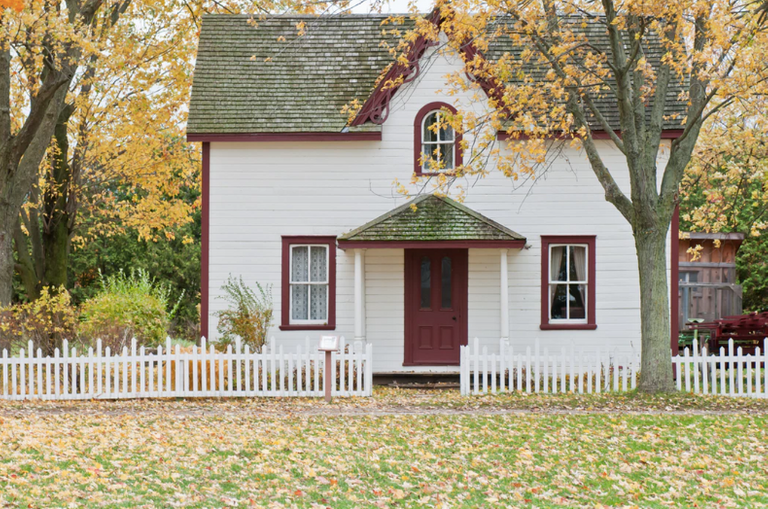The following is not my own, but an essay called What Makes a Story by the late Ursula K. Le Guin - storytelling extraordinaire. Though not a reader of her stories, I have always respected and admired her essays on writing, as she is always able to convey complexities in simple illustrations or analogies. Particularly, the "story house" analogy is a helpful way of understanding continuity and development in stories. Please enjoy and check out more of her works!

What Makes a Story
Ursula K. Le Guin
What makes a story is —
you want to 'find out what happens next' — this bit of the story leads you to the next one.
Like running, when you have to put the left foot down ahead of the right foot, because you are actually not balanced on the right foot that touches the ground but are leaning forward into the run, and then you have to put the right foot down ahead of the left one because ditto. This is the cantputdowner type story, fast-paced, suspenseful. You don't see much scenery, running, or learn much. You run for the sake of running, the pleasure and excitement.
Then there is the story like walking, steady, and you fall into the flow of the gait and cover ground while seeing everything around you, scenery you may never have seen before; and the walk may end up somewhere you've never been.
And there's the story like dancing, where the next movement keeps growing out of the last movement, but not in a straightforward way, its direction isn't merely onwards but involves circles and feints and repetitions and all kinds of strange gestures, and yet if the dance is true to itself, all the movements are connected and every one follows from the last, not predictably, but inevitably.
I use bodily similes not mechanical ones, walking, running, dancing, not driving fast or slow in a car or flying in a plane, because I think art depends on rhythms, and body rhythms are what writers use. Mechanical rhythms, non-rhythmic movement like in a car or plane, may be used successfully in mechanical arts, like the movies. But writing, whatever its medium, is made of words, and words are bodily, made with the body and the breath, received by the body, felt with the body, and the rhythms of words are bodily rhythms.
"A story has a beginning, a middle, and an end:" This comes from Aristotle, and it splendidly describes a great many stories from the European narrative tradition, but it doesn't describe all stories. It's a recipe for steak, it's not a recipe for tamales. The three-part division is typically European, and I would say that it's also typically European in putting emphasis on the end — on where the story goes, what you get to.
It implies process or progress in time: begin, proceed, end. My talk about running, walking, dancing rhythms in story also implies lapse of time. However, when looking at the construction of a story, what if space supplies the language? The story as bag or pot. Or the story as house.
A house consists basically of an inside; that's what a house is — something to come into from outside. There's a front door, an entrance. Inside consists of a room, or different kinds of rooms, where various things can happen, and maybe halls, stairs, closets, furniture. Probably windows, from which you can see outside. And there's usually a back door.
You want the entrance to be attractive, you want the front door to be invitingly open, showing a glimpse of what's inside. Once you've lured your reader inside, you may direct her in a definite route right through the house and the events happening in it to the back door. Or you may just provide the rooms and halls and staircases and events, and let the reader find her own way around — let her live there for a while. Or you may conduct her smilingly up to the attic and show her the yellow wallpaper and lock her in. Or you may show her views of undreamed-of landscapes through the windows, charm'd magic casements opening on the foam of perilous seas in faery lands forlorn, so she never wants to leave the house at all, and has to be pushed out the back door — or shown that there's a sequel right next door —
About the back door, sometimes it's the important thing about the house: what the back door opens onto. Maybe no back stairs, aaaaaiiii thud. But sometimes the exit is there only because the reader can't live her whole life in the house, so you have to let her out; but it's the house that counts, what happens in the house. The end may be a climax or revelation, a denouement or end in the Aristotelian sense, or it may just be where this story stops being. If the house is soundly built, and what happens inside it makes sense, if the house itself is a memorable experience, the back door isn't any more important than any other part of it.
Image by unsplash.com free use photos
Hi! I am a robot. I just upvoted you! I found similar content that readers might be interested in:
http://www.ursulakleguin.com/WhatMakesAStory.html
Congratulations @leobenvenuti! You received a personal award!
You can view your badges on your Steem Board and compare to others on the Steem Ranking
Do not miss the last post from @steemitboard:
Vote for @Steemitboard as a witness to get one more award and increased upvotes!
Congratulations @leobenvenuti! You received a personal award!
You can view your badges on your Steem Board and compare to others on the Steem Ranking
Do not miss the last post from @steemitboard:
Vote for @Steemitboard as a witness to get one more award and increased upvotes!